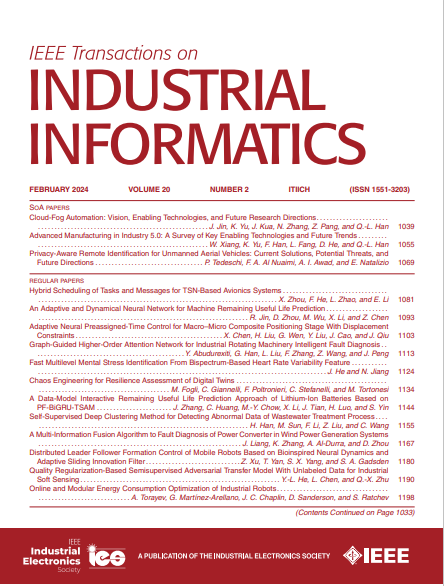Fully Automated Deep Residual PCA Network
IF 9.9
1区 计算机科学
Q1 AUTOMATION & CONTROL SYSTEMS
引用次数: 0
Abstract
Recently, a deep residual form of the principal component analysis (PCA) model has been proposed as a feature engineering for industrial data analytics, which has obtained more satisfactory performances compared to the shallow feature engineering model. However, a critical issue remain unsolved is how to effectively determine the number of hidden layers in the deep model, which may significantly influence its performance. In this article, a novel hidden layer selection strategy is proposed to automate the training process of the deep residual PCA model. With a new definition of similarity factor based on cosine distance between two latent variables, the degree of pattern repetition can be well recognized and evaluated. In addition, a layer retained factor is further defined to assess the necessity of adding a new hidden layer to the deep model. As a result, the number of required hidden layers can be automatically determined, making the deep residual PCA model fully automated. Four industrial case studies are provided for performance evaluation, based on which both feasibility and effectiveness of the new strategy are confirmed.全自动深度残差PCA网络
近年来,人们提出了一种深度残差形式的主成分分析(PCA)模型作为工业数据分析的特征工程,与浅层特征工程模型相比,该模型取得了更令人满意的性能。然而,如何有效地确定深度模型中隐藏层的数量是一个尚未解决的关键问题,这可能会严重影响其性能。本文提出了一种新的隐层选择策略,使深度残差PCA模型的训练过程自动化。基于两个潜在变量之间的余弦距离定义相似因子,可以很好地识别和评价模式重复的程度。此外,进一步定义了层保留因子,以评估在深度模型中添加新隐藏层的必要性。因此,可以自动确定所需隐藏层的数量,使深度残差PCA模型完全自动化。提供了四个行业案例进行绩效评估,在此基础上证实了新战略的可行性和有效性。
本文章由计算机程序翻译,如有差异,请以英文原文为准。
求助全文
约1分钟内获得全文
求助全文
来源期刊

IEEE Transactions on Industrial Informatics
工程技术-工程:工业
CiteScore
24.10
自引率
8.90%
发文量
1202
审稿时长
5.1 months
期刊介绍:
The IEEE Transactions on Industrial Informatics is a multidisciplinary journal dedicated to publishing technical papers that connect theory with practical applications of informatics in industrial settings. It focuses on the utilization of information in intelligent, distributed, and agile industrial automation and control systems. The scope includes topics such as knowledge-based and AI-enhanced automation, intelligent computer control systems, flexible and collaborative manufacturing, industrial informatics in software-defined vehicles and robotics, computer vision, industrial cyber-physical and industrial IoT systems, real-time and networked embedded systems, security in industrial processes, industrial communications, systems interoperability, and human-machine interaction.
 求助内容:
求助内容: 应助结果提醒方式:
应助结果提醒方式:


